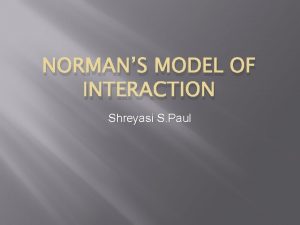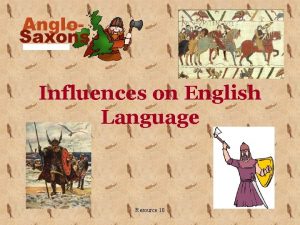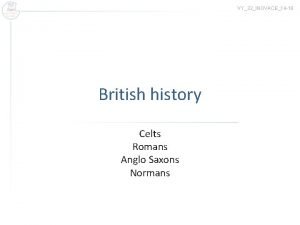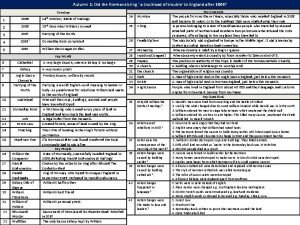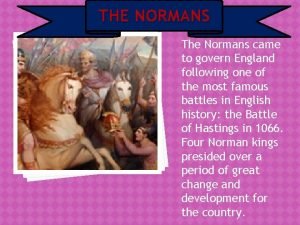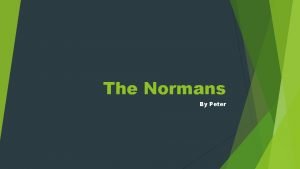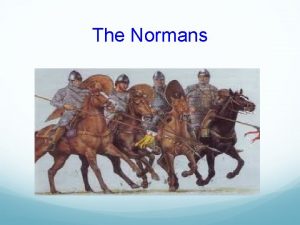AS NORMANS QUESTIONS Exam Technique 30 Mark Question







- Slides: 7

AS NORMANS QUESTIONS Exam Technique - 30 Mark Question

The Basics � � � You have two sources to analyse and evaluate You have to decide which of them is ‘better evidence’ for the topic at hand You do this through a process of continuous comparison – of content and of provenance You come to a final conclusion about the strength of each source – you may well conclude that one is stronger than the other These will be primary sources – you need to know your authors!

Structure � � � The structure to write these 30 mark responses is straightforward – 4 paragraphs Paragraph 1 – Compare the content of the sources and analyse what they AGREE on Paragraph 2 – Compare the content of the sources and analyse what they DISAGREE on Paragraph 3 – Compare the provenance of the sources and make some judgements about which may be more reliable/useful/biased/accurate Paragraph 4 – a conclusion using all of the above to make a judgement about the relative strength of each of the sources as evidence Take 5 minutes to plan your answer at the start

Content Work � � Look for clear similarities and differences in the two sources Even if they agree, one might go a bit further than the other. Don’t be afraid to point that out. Try to explain the differences – which of them is more credible? Use some well selected ‘own knowledge’ here to help you evaluate the content The source drives the answer – don’t use the source to back up what you think you know. The source MUST come first

Provenance Work � � You will need to know who the authors are and what their position is in relation to the question (clergyman, Norman, Saxon, contemporary, later source etc. ) You will also need to consider the dates of the sources – a difference in dates may well explain any difference in content Avoid general statements such as ‘he is a Norman and therefore biased’. Judge the source on its merits, not simplified statements This is the most difficult part of this question and requires practice to hone your technique

Conclusion � � Bring together the ideas you have discussed above to form a judgement about which is the stronger piece of evidence Do not introduce new ideas Answer the question – how strong is each source as a piece of evidence in relation to the topic in the question? Don’t contradict your self – your conclusion should naturally follow the arguments you have made above about the strengths and weaknesses of the two sources

Common Mistakes � � � � � Incorrect referencing … either source or author Spelling, punctuation and grammar errors Writing about a source on its own – no comparison Comparing content or provenance – but not both Provenance comparison rather simple – biased or not Narrating the sources – but not analysing. This is not a knowledge driven answer. Not relating the sources directly to the Q Running out of time – rushed conclusion Not writing enough generally Not deciding which is better evidence

